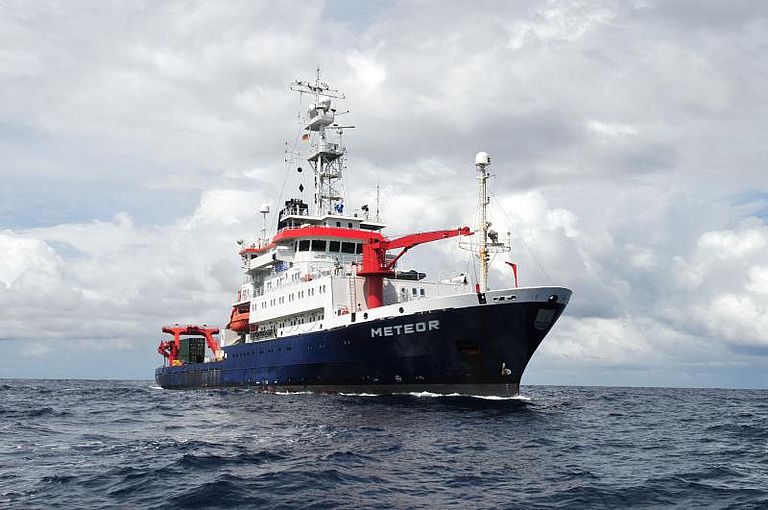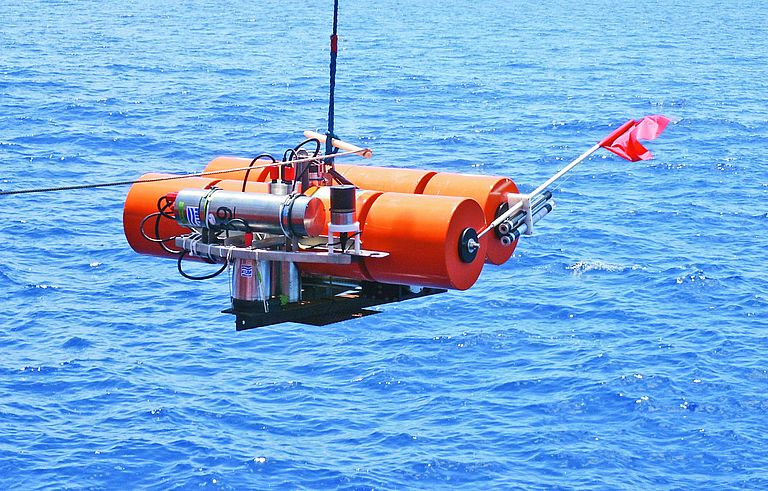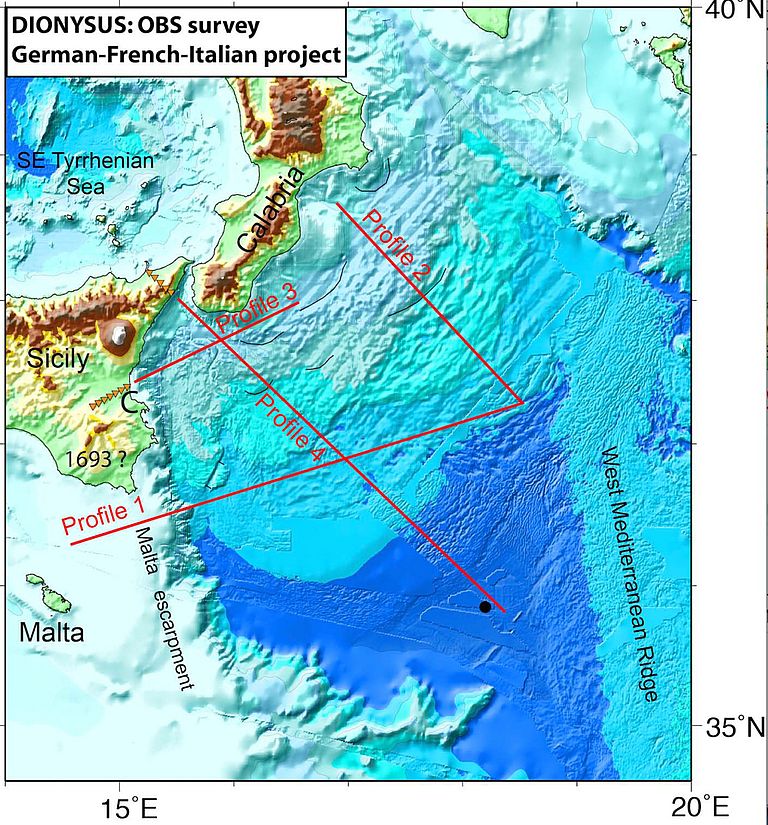Tracking Earthquakes in the Mediterranean
GEOMAR scientists start expedition to tectonic plate boundaries off Sicily
The Greek god Dionysus stood for joy and pleasure, but also for riots, ecstasy and chaos. Thus, he is a fitting metaphor for the nature of the Mediterranean. Just like Dionysus, the Mediterranean nature symbolizes relaxation and the good life for many people. At the same time, it is a very dynamic region where several tectonic plates push against each other, causing natural disasters and many victims again and again. Though some 250 million people live in the catchment area of the Mediterranean and several million tourists visit the coasts every year, the exact risk potential has so far been inadequately studied.
Scientists from Italy, France and Germany now want to investigate the plate boundaries between the European and African tectonic plates just off Sicily and Malta. They named their project after that very god DIONYSUS, the name as an acronym for "Deep structure of the IONian Sea and east SicilY: wide-angle seismic SUrvey of the Calabria Subduction zone and Tethys margins". An important part of the DIONYSUS project is a cruise on the German research vessel METEOR. Chief scientist is Prof. Dr. Heidrun Kopp, geophysicist from GEOMAR Helmholtz Centre for Ocean Research Kiel. On 10 October, METEOR leaves the port of Catania (Sicily) and heads towards the study area in the southeast of Sicily.
“The region is of great interest because in the past it has been hit repeatedly by devastating earthquakes and tsunamis”, explains Professor Kopp. One example is the earthquake in the Straits of Messina in 1908 and a subsequent tsunami that cost 72,000 lives. "Today, the number of victims would surely be much higher since coasts are much more densely populated today,” says the geophysicist from Kiel. So far, researchers do not understand in detail the reasons for the repeated earthquakes in this region , but it is known that the submarine shocks during earthquakes trigger tsunamis regularly, leading to further destruction. "Therefore our work contributes directly to the regional risk assessment on site," says Professor Kopp.
During the 24-day long cruise the researchers plan to study the structure of the ocean floor to a depth of 30 kilometers. For that purpose, so-called ocean bottom seismometers (OBS) are positioned on the sea floor in approximately 3500 meters water depth. Their purpose is to register earthquake signals and artificially generated acoustic waves that travel through the Earth's interior and are then deflected and reflected at the boundaries of different rock layers. "So, similar to a CT scan, we are able to illuminate the interior of the Earth,” says Heidrun Kopp. In order to get high resolution images of detailed structures in great depths, a large number of instruments are needed. Therefore, GEOMAR and the French marine research center IFREMER that also participates in this project, provide 30 ocean bottom seismometers each, so that a total of 60 instruments will be installed on the seabed simultaneously.
During the experiment, the seismological service in Rome will additionally install seismometers on land to provide a continuous record from the Mediterranean Sea up to the flanks of Mount Etna. "We combine both our expertise and our infrastructure with the French and Italian colleagues in order to decrypt – at a European level – the complexity of the tectonic processes in the Mediterranean," says Heidrun Kopp.
Expedition at a glance:
RV METEOR cruise: M111
Chief scientist: Prof. Dr. Heidrun Kopp (GEOMAR)
Project: DIONYSUS
Duration: 10.10.2014-01.11.2014
Start: Catania (Sicily)
Working area: Ionian Sea
End: Catania (Sicily)
Detailed information is available on the GEOMAR expedition webpage <link en research expeditionen>www.geomar.de/en/research/expeditionen
Contact:
Jan Steffen (GEOMAR, Communication & Media), Tel.: (+49) 0431 600-2811, jsteffen(at)geomar.de





